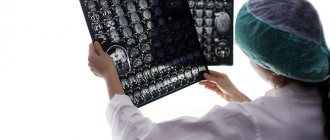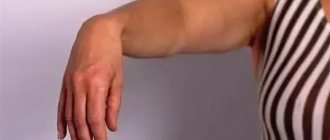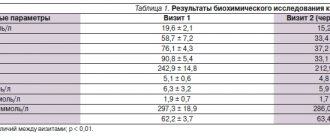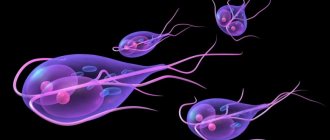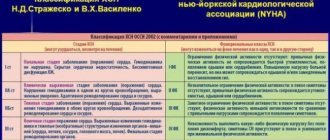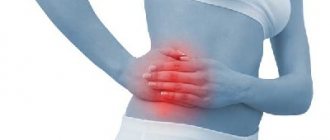Biliary dyskinesia is a disease as a result of which the flow of bile into the duodenum is stopped or significantly reduced due to uncoordinated work (contractions) of the ducts, gallbladder and sphincter of Oddi. Bile is a special liquid that is produced by the liver and promotes the breakdown of fats and the movement of food through the intestines. Before bile enters the intestines, it passes through the bile ducts - the hepatic and bile ducts, the gallbladder, and the sphincter of Oddi. The latter, due to its contractions, ensures its entry into the duodenum.
Dyskinesia is often observed in children, which is expressed by pain in the right hypochondrium and disturbances in the functioning of the digestive tract. As a result of the disorder, the child experiences a deficiency of bile in the intestines, which entails disruptions in the digestive tract and a deterioration in the general condition of the body. The latter is caused by insufficient absorption of many nutrients and vitamins K, E, A and D, which significantly worsens if bile does not participate in the process.
Causes of biliary tract diseases in children
Biliary dyskinesia does not manifest itself in structural changes in internal organs - liver, gall bladder, ducts. Its cause is a violation of their function, which is caused by malfunctions in the central nervous system and the autonomic system of the body. The causes of the disease should be sought much deeper than it might seem at first glance - in the vast majority of cases, in the emotional state of the child.
Stressful situations, increased emotionality, nervous breakdowns - all this affects the state of the child’s body and leads to excessive involuntary contractions of the gallbladder. Because of this, excess bile accumulates in the area of the bile ducts, which begins to thicken, losing its antibacterial properties and functionality. At the same time, the formation of stones and blood clots begins inside the biliary tract, which interferes with the natural movement of bile to the duodenum. As a result, the disease itself develops and its complications become probable.
Additional factors of psychosomatic causes of the development of the disease may be:
- irregular meals;
- excess fat in food;
- a large amount of spicy, salty, smoked foods in the diet;
- consumption of junk food - nuts, crackers, soda;
- food allergies;
- intestinal parasites. Giardia is especially dangerous;
- side effects of certain pharmacological drugs;
- intestinal diseases and poisoning.
Frequency of meals and healthy foods are very important for children. This should be given the closest attention to anti-parasitic prevention. A specialist will help you adjust your child’s diet.
Why does JVP occur?
Possible causes of biliary dyskinesia include the following factors:
- irregular nutrition, predominance of fatty, salty, spicy foods, foods with flavor enhancers;
- cardiopsychoneurosis;
- food allergies;
- chronic diseases of the gastrointestinal tract;
- parasitosis;
- stress, increased neuro-emotional excitability;
- increased physical and intellectual stress.
Exacerbating factors may be excess weight in the child, a sedentary lifestyle, and functional intestinal disorders.
Types of dyskinesia
Depending on the type of functional disorders in the biliary tract in children, several types of disease are distinguished:
- hypotonic - expressed in a decrease in the tone of the sphincter of Oddi;
- hypertensive - manifests itself, on the contrary, in increased sphincter tone;
- hypokinetic - associated with a slowdown in the outflow of bile;
- hyperkinetic - accompanied by sudden releases of bile.
Mixed types of the disease are quite often observed. Functionally, each type of dyskinesia is characterized by different symptoms and requires a different approach to treatment. In each specific case, a specialist should prescribe procedures based on the results of tests and examinations.
Symptoms of dyskinesia
Depending on the type of disease, its symptoms manifest differently. In the hyperkinetic course of the disease, when contractions of the gallbladder are intensified, acute pain in the right hypochondrium manifests itself most intensely. It can spread to the thigh and also radiate to the shoulder blade. Typically, the pain is not constant, but manifests itself when eating fatty, spicy, fried foods, in stressful situations and during high physical activity.
If hyperkinetics of the gallbladder is combined with hypertension of the biliary sphincters, the pain is expressed somewhat more strongly and can occur without any apparent reason. Often biliary dyskinesia of the hyperkinetic type is accompanied by attacks of nausea and vomiting, worsening after eating.
With the hypokinetic type of the disease, children feel a constant nagging pain in the right hypochondrium. There is also a feeling of heaviness in the stomach, accompanied by loss of appetite. There may be attacks of nausea and a feeling of bitterness in the mouth. Stool disturbances are quite common - diarrhea, constipation or change in the color of stool (it becomes very light).
Symptoms of either type may worsen if children do not eat properly. Therefore, at the first signs and suspicions of the disease, it is necessary to adjust the diet and contact an osteopathic specialist who can diagnose the disease and prescribe effective treatment.
Danger of disease
Diseases of the biliary tract in children are quite dangerous, especially at an early age, when they are difficult to diagnose - the child is not yet able to talk about symptoms such as nausea or bitterness in the mouth. Although the disease itself is not exclusively dangerous, it does have unpleasant consequences. If children are not treated, then:
- the risk of stones forming in the gall bladder or bile ducts in children increases. This occurs due to the bile accumulating in it, which gradually thickens and hardens. Removing stones is not always possible using non-surgical methods;
- food is not digested properly. Bile helps break down fats and digest sweet foods. If this does not happen due to its lack in the intestines, some of the food begins to be absorbed incompletely or improperly. As a result, the body not only receives less nutrients and minerals, but also begins to accumulate harmful substances;
- metabolism is disrupted. Excess fats and sugars that are not broken down properly due to disruption of the biliary tract lead to weight gain and excess weight, and also increase the risk of developing diabetes. The latter is a serious and practically incurable disease, the manifestations of which can only be stopped. But it is impossible to do this without restoring the normal functioning of the bile ducts, gallbladder and liver;
- a digestive system disorder occurs. This is expressed in constant unpleasant sensations - nausea, heaviness in the stomach, pain in the intestines. Although, like dyskinesia itself, all this is not fatal, vomiting, diarrhea or constipation can hardly be considered pleasant moments in life.
Diagnosis of the disease
Dyskinesia, as a functional disease of the biliary tract, is quite difficult to diagnose. This group of disorders does not cause changes in the structure of external organs, which is why many conventional diagnostic methods are not so effective. An osteopath can help diagnose diseases of the biliary tract in children using manual techniques to assess the size and shape of the gallbladder. Additionally, an ultrasound may be prescribed, which will confirm the diagnosis. In some cases, a functional study is also prescribed, for example, using duodenal intubation.
Diagnostic methods
Treatment of biliary dyskinesia in children begins with an accurate and detailed diagnosis. The doctor must differentiate the disease from other gastrointestinal pathologies, determine the type of illness, and assess the child’s general health. At the initial appointment, he will ask several questions regarding the duration of symptoms, medical history, previous diseases and operations. If you already have the results of previous examinations and discharge, take them with you. In addition, mandatory palpation is carried out, this will help the specialist determine the further direction of diagnosis.
For a more accurate examination, laboratory tests (biochemical blood test, coprogram), ultrasound, and in rare cases, CT or MRI may be used. Cholecystography and gastroscopy are widely used.
Fractional examination of gastric juice and duodenal intubation is a reliable method, but is rarely used in pediatric practice.
Treatment of dyskinesia in children
General treatment includes: a special diet, taking vitamins and means to improve liver function (essentiale), mineral water. Drug treatment is determined by the nature of the disorder.
For hypermotor dyskinesia, drugs are used to relax smooth muscles (no-spa, papaverine), sedatives (motherwort, valerian), physiotherapy (electrophoresis, microwave procedures, etc.)
For hypomotor dyskinesia, drugs that stimulate the production of bile (allochol, flamin) and gastrointestinal motility (metoclopramide), and tubages are used.
Prevention
Preventive measures that help prevent the occurrence of the disease:
- compliance with the work and rest regime;
- a complete balanced diet with a limit on fried, fatty foods, smoked foods, salty foods and the inclusion of fresh vegetables and fruits;
- quitting smoking and other bad habits;
- dosing of physical activity;
- good sleep, regular walks in the fresh air;
- timely treatment of pathologies (both acute and chronic);
- exclusion of stressful, traumatic situations.
It is worth highlighting separately secondary prevention, which is indicated after diagnosing the pathological process in the patient. It consists of conducting regular preventive examinations to identify characteristic signs of the disease at the earliest stages.
Despite the fact that the pathology is chronic, if the measures listed above are observed, the disease will proceed without exacerbations. If you refuse to take preventive measures, serious complications from the liver, gallbladder, and bile ducts are possible.
Basic methods of treating biliary dyskinesia
Small meals are necessary to normalize the patient's condition.
Treatment of hypotonic type DVT is carried out in several directions. Its goal: to stimulate the functioning of the biliary system; this requires a special diet. Products that help increase tone are mainly vegetables and fruits. A positive effect will be achieved by eating carrots, cabbage, apples, etc., in addition, tomatoes and green vegetables will help.
They are recommended to be consumed boiled or pureed: the food should not put a lot of stress on the digestive system. At the same time, indigestible foods are excluded from the diet: carbonated drinks and beer, spicy and fatty foods, etc.
Drug therapy will be aimed at increasing the tone and increasing the contractile function of the biliary tract: tincture of lemongrass, strychnine preparations, and sulpiride may be prescribed. In addition, sunflower and olive oil can be used for a relaxing effect. In case of exacerbation and sharp deterioration of the condition in the first 1-2 days, a gentle diet may be prescribed: the patient is given only drink - this can be rosehip decoction, weak tea, sweet natural juices. After this, for several days you can give only food that is most easily digested: pureed cereals and soups, boiled vegetables.
Small meals are necessary: the patient must be fed 5-6 times a day, but the portions should be small, and at least 2-2.5 liters of liquid must be drunk during the day. When the condition returns to normal, a simple gentle diet will be enough. For biliary dyskinesia, treatment with mineral waters is prescribed. In the hypokinetic form, highly mineralized waters have a healing effect: this is Morshyn water, as well as Essentuki No. 17 and some others.
To increase the effect of mineral waters, patients may be offered spa treatment. Therapy methods based on natural sources have successfully proven their effectiveness. They can be combined with physiotherapy: patients are prescribed electrophoresis or low-intensity ultrasound treatment.
What causes dyskinesia?
There are many reasons for the formation of dyskinesia:
- irregular and unbalanced diet;
- the presence of salted, pickled and smoked foods in the child’s diet;
- consumption of soda, chocolate, cocoa;
- binge eating;
- excess sweets;
- sedentary lifestyle;
- increased excitability of the nervous system;
- history of perinatal encephalopathy;
- chronic and acute stress;
- congenital anomalies of the gallbladder (kinks and constrictions);
- helminthic infestations and giardiasis;
- bacterial infections;
- food allergy.
Therapeutic diet
The following are excluded from the diet:
- rich chicken, meat and fish soups;
- marinades, smoked meats, pickles;
- fried and spicy foods.
Significantly limited:
- tomatoes;
- chocolate and cocoa;
- sweets;
- baking;
- ice cream.
Allowed:
- vegetarian soups;
- porridge;
- dairy products;
- boiled lean meat and fish;
- marshmallows and marmalade;
- non-concentrated compotes and weak tea;
- crackers and yesterday's bread;
- vegetables, berries and fruits.
Question answer
Women get sick 10 times more often than men.
The primary type most often occurs in individuals with autonomic dysfunctions, nervous disorders, poor diet and sleep disorders. Secondary pathology develops against the background of diseases of the digestive system, hepatitis, after removal of the gallbladder. The likelihood of getting sick is influenced by hormonal levels and the presence of certain chronic diseases in the anamnesis.
If treated incorrectly, the risk of gallstones formation, acute or chronic pancreatitis, cholecystitis, and reflux gastritis increases. All this is difficult to treat and seriously affects the patient’s health.
Symptoms
The symptoms of the disease depend on its type. However, it is possible to identify common features that are characteristic of all types of ADHD:
- dull or sharp pain in the right hypochondrium, radiating to the scapular region and shoulder (occurs mainly after meals and physical activity);
- feeling of abdominal distension, heaviness;
- bitterness in the mouth;
- flatulence;
- nausea or vomiting;
- constipation, loose stools;
- heart rhythm disturbances, changes in the tone of blood vessels and other vasomotor pathologies;
- headache (migraine), insomnia;
- increased sweating;
- general weakness, mood swings, irritability.
The disease is accompanied by a deterioration in the process of bile outflow into the duodenum with subsequent disturbances in digestive function. If you do not consult a doctor in a timely manner and do not begin quality treatment for dyskinesia, the risk of developing serious complications increases significantly.
